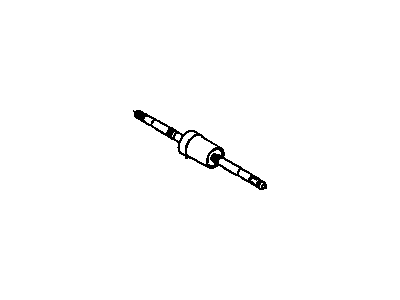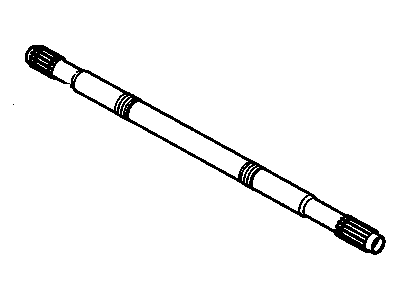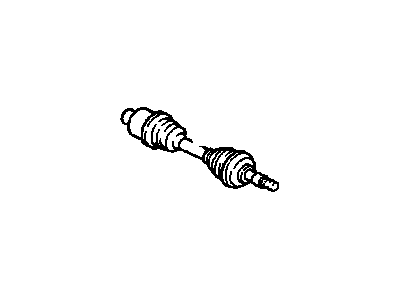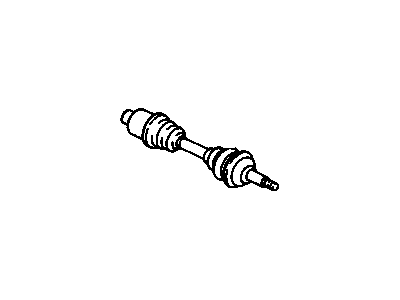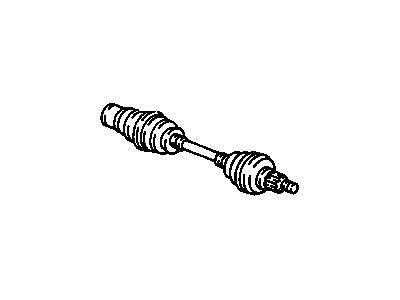
My Garage
My Account
Cart
Genuine Cadillac Eldorado Axle Shaft
Car Axle Shaft- Select Vehicle by Model
- Select Vehicle by VIN
Select Vehicle by Model
orMake
Model
Year
Select Vehicle by VIN
For the most accurate results, select vehicle by your VIN (Vehicle Identification Number).
8 Axle Shafts found
Cadillac Eldorado Damper (Painted) Shaft Assembly
Part Number: 7848444$163.04 MSRP: $305.53You Save: $142.49 (47%)Cadillac Eldorado Front Wheel Drive Shaft
Part Number: 7846169$47.94 MSRP: $90.46You Save: $42.52 (47%)Ships in 1-3 Business Days
Cadillac Eldorado Axle Shaft
An Axle Shaft of Cadillac Eldorado automobiles is a part that transmits power from the differential to the drive wheels, and designed for their independent rotation to increase tractive force. These steel shafts include; solid axle for trucks and older models of vehicles as well as the halfshaft for the vehicles with independent suspensions. Assembly of a Land Cruiser starts with a solid axle that contains the differential and ax shafts and the half assembly includes splined shaft for the connection with the CV joint and the wheel hub. Sustenance may be necessary because of worn out CV joints or axle bearings; this causes noise and vibration. In conclusion, the Axle Shaft is a vital component that holds the wheels in place and transfers torque while at the same time bearing the weight of the particular Cadillac Eldorado car model.
Each OEM Cadillac Eldorado Axle Shaft we offer is competitively priced and comes with the assurance of the manufacturer's warranty for the part. Furthermore, we guarantee the speedy delivery of your orders right to your doorstep. Our hassle-free return policy is also in place for your peace of mind.
Cadillac Eldorado Axle Shaft Parts Questions & Experts Answers
- Q: How to remove and install an axle shaft on Cadillac ElDorado?A:To start removing and installing an axle shaft, begin by raising the vehicle and supporting it. Remove the wheel and tire assembly and install a modified boot protector on the outer CV-joint. Thereafter, insert a drift punch into the caliper and rotor to prevent the rotor from turning before undoing the hub nut. Proceed to disconnect the stabilizer link if necessary. The ball joint cotter pin should be removed first then its nut followed by loosening it in relation with knuckle by using an appropriate tool. The ball joint must be separated from this steering knuckle using a prybar afterwards. After, partially install the hub nut for thread protection and remove the axle shaft from the hub with a suitable tool. Move strut and knuckle rearward. Separate the axle shaft from the transaxle using a prybar with a wood block fulcrum to protect the transaxle case. For installation purposes, where applicable you can start by putting on the right side axle shaft. In order to seat, tap until seated into the transaxle is done when installing the axle shaft then the snap ring should be checked whether or not it is seated. Installation of the axle shaft into the hub bearing assembly is next and a new hub nut can be loosely installed. Connect the ball joint in the steering knuckle by tightening its nut. Torque specified ball joint nuts while inserting new cotter pins. Insert a drift punch between the caliper as well as the rotor so that the rotor will be prevented from turning hence tighten the hub nut within specified torque limits. Reinstall (if removed) stabilizer link but now without the boot protector. Remove any installation tools when applicable. Finally, fit back the wheel again plus tire among other things before lowering the vehicle down after completion of all repairs.
